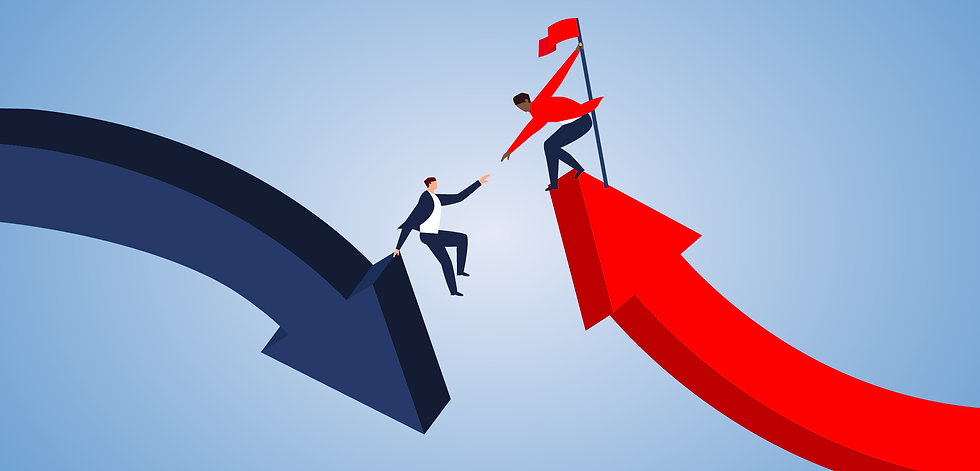The Line: Economic Growth Hits 6.9% in Q421
- Brown Harris Stevens

- Jan 31, 2022
- 2 min read
Updated: Feb 2, 2022
Gregory Heym is Chief Economist at Brown Harris Stevens. His weekly series, The Line, covers new developments to the economy, including trends and forecasts. Read on for the latest report and subscribe here to receive The Line in your inbox.

The U.S. economy grew at a 6.9% annual rate in the fourth quarter of 2021, much better than the 5.5% forecast. In the third quarter, the economy grew at just a 2.3% annual pace, so this jump is impressive, especially with the surge in COVID-19 cases during the quarter. This was the sixth consecutive quarter of economic growth since the recession in the first half of 2020. For all of 2021, the U.S. economy grew at a 5.7% rate, the highest yearly growth rate since 1984. Inventories and consumer spending were the biggest drivers of the economy in the fourth quarter. We should be a bit concerned that a huge part of the fourth quarter growth came from inventories, as that buildup is not likely to continue into 2022. Since consumer spending accounts for 70% of Gross Domestic Product, it’s a good thing consumers were out buying a lot the past three months. That meant they were saving less, as the personal savings rate fell from 9.5% in the third quarter, to 7.4% in 4Q21. This rate hit a record high of 26.1% in the second quarter of 2020. So, how big is the U.S. economy right now? So big, that when it sits around the house, it sits around the house! Sorry, couldn’t resist telling a bad old joke. Real Gross Domestic Product is sitting at $19.8 trillion, which is 3% more than before the COVID-19 pandemic. That’s a great comeback, but we’re still around 2%-3% below where we would have been without the pandemic. The big question—and isn’t it always—is where we go from here. The early predictions for Q122 are looking for much slower growth, as COVID-19 continues to cause shortages of both materials and workers. Runaway inflation, which is reducing the purchasing power of Americans, will also remain an issue going forward. My advice is: Don’t worry too much about first-quarter growth this year. We know that the Omicron variant is fading, which should help ease supply issues and bring more people back to work. Expect a bounce back in activity starting in the second quarter. This should continue through the rest of 2022, leading to a growth rate of about 3% for the year.
Weekly Jobless Claims Lower than Expected

Initial claims for unemployment recently fell by 30,000 to 260,000. This was the first weekly decline in a month, an indication that the impact of the Omicron variant on employment seems to be fading. Even with the spike in claims the first three weeks of January, they were still at historically low levels. In the 10 years before COVID-19, initial claims for unemployment had averaged about 335,000 per week, a level we haven't seen since the end of September. The biggest problem the labor market faces remains a shortage of workers, not layoffs.



Well I truly enjoyed reading it. This subject offered by you is very helpful and accurate.
먹튀 검증 커뮤니티 https://j9korea.com/
스포츠 토토 사이트 https://j9korea.com/
안전 카지노 사이트 https://j9korea.com/
카지노 검증 사이트 https://j9korea.com/
카지노 게임 사이트 https://j9korea.com/